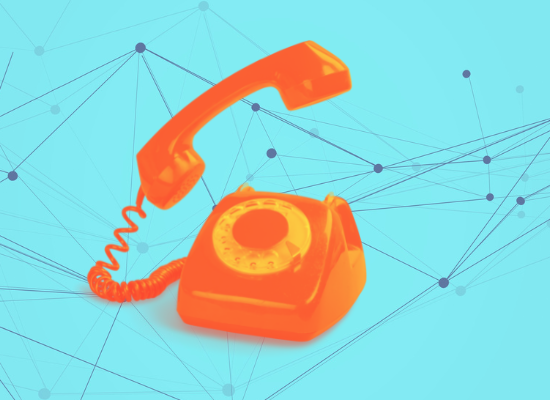
Stephanie Hepburn is a writer in New Orleans. She is the editor in chief of #CrisisTalk. You can reach her at .
Long before the Covid pandemic, which thrust students across the United States into virtual classrooms, the internet was an issue for rural and remote communities. At every National Association of Counties rural caucus Dr. Ron Manderscheid attended throughout the years, a county commissioner shared the same story. He’s executive director at the National Association for Rural Mental Health and former executive director of the National Association of County Behavioral Health and Developmental Disability Directors. “They’d tell me their county has internet,” he says, “but to access it, children would have to come and sit outside the commissioner’s office.” Then they’d turn to Dr. Manderscheid and ask, “Isn’t there something terrible about that?” He agreed.
“Children aren’t getting an equivalent education because they don’t have access to the information they need,” he says. “We’re creating a two-tier society.”
The pandemic has exacerbated the digital divide and the psychological impact of isolation. In May 2021, Mary Collins, Special Populations Section supervisor at Montana’s Department of Public Health and Human Services, told #CrisisTalk that people living in rural and remote areas might only see people outside their immediate family when they go into town. “It cut off any opportunity for farmers and ranchers to interact with a wider circle,” she said. The state, with a suicide rate of 26.1 per 100,000 total population, has one of the top suicide rates in the United States. Montana decreased from the highest to the third-highest between 2017 and 2019, where it remained in 2020. Wyoming and Alaska have the highest suicide rates at 30.5 and 27.5 per 100,000 total population, respectively.
In rural and remote communities, Dr. Manderscheid points out there’s an increased need for telemedicine to overcome barriers to care—like sparse populations and geographic challenges. However, internet and phone access can be far from reliable. For example, as technology and access to telehealth improve, Dr. Xiomara Owens recently told #CrisisTalk that people in Alaska are also increasingly using it to bridge behavioral healthcare gaps. However, it’s not an easy fix in some communities, where cell phone and internet access are far from a certainty. These are issues Dr. Owens, Behavioral Health Aide Training director at the Alaska Native Tribal Health Consortium, hopes state leaders consider as they design and implement 988. “Without consistent cell phone and internet connectivity,” she said, “there needs to be ample coordination and partnership with the go-to organizations and people in those communities.” By July 16, telecom carriers must direct 988–the three-digit number for mental health, substance use, and suicidal crises—to the National Suicide Prevention Lifeline.
So while many rural and remote communities were already using telehealth for mental health and substance use care, making the pivot to and expanding telehealth during the Covid pandemic far easier, internet and phone access remained erratic. Dr. Manderscheid notes the pandemic simply made digital disparities even more apparent.
In 2021, Congress passed the Infrastructure Investment and Jobs Act to foster digital equity, including $65 billion to provide people with affordable and reliable broadband (high-speed internet access, 25 megabits per second or faster). Title III of the act requires the National Telecommunications and Information Administration to establish grant programs that build capacity and support and promote digital inclusion and equity. The agency launched three programs to better connect people to high-speed internet:
- Broadband Equity, Access, and Deployment Program ($42.5 billion)
- State Digital Equity Act programs ($2.75 billion)
- Enabling Middle Mile Broadband Infrastructure Program ($1 billion)
Funded by the act and administered by NTIA, the three innovations are part of a broader national “Internet for All” initiative. The Broadband Equity, Access, and Deployment Program will connect people to broadband by providing $42.5 billion in grants to states, territories, the District of Columbia, and Puerto Rico, while the State Digital Equity Act programs includes three grants that will help states and territories develop digital equity plans and digital equity projects and fund the implementation of both. The Enabling Middle Mile Broadband Infrastructure Program supports middle-mile infrastructure to connect local networks to national and regional ones.
As of May 18, thirty-four states and territories have joined the “Internet for All” initiative, including Alaska and Montana. States and territories must submit a letter of intent and their planning funds budget to take part in the Broadband Equity, Access, and Deployment Program. The program will give participating states $5 million in planning funding to develop a five-year action plan.
Behavioral healthcare has historically been an urban discipline, notes Dr. Manderscheid, while rural and remote areas typically have a dearth of providers. “It may be hundreds of miles to the nearest provider, and there are no child psychiatrists in some places.” Iowa has had such a shortage of psychiatrists that the state passed legislation in 2016 permitting psychologists who undergo targeted training to prescribe medication. However, some experts have argued that giving specially trained psychologists prescriptive authority doesn’t improve access for people in rural and remote areas, since most psychologists are in cities and suburbs.
Another hurdle in small rural and remote communities is mental health stigma. “If someone has depression,” says Dr. Manderscheid, “they don’t want to broadcast it to their neighbors.” “Even if there is a mental health or substance use treatment provider there, there’s a cultural prohibition against using that provider because of the stigma associated with it.” Consequently, people are more likely to visit their local primary care doctor.
Dr. Manderscheid points out that most primary care doctors have little training in mental healthcare. “It’s whatever they got in medical school and residency, which is often outdated,” he says, “yet they’re practicing mental healthcare by prescribing medication and operating on a trial-and-error basis.” To improve care, he urges states and local leaders to fund mental health training for primary care physicians, especially those in rural and remote areas.
As primary care physicians age and retire, Dr. Manderscheid says local doctors aren’t replacing them. Instead, circuit rider physicians—usually part of a more extensive healthcare system like the Gundersen Health System in La Crosse, Wisconsin, and the Mayo Clinic in Rochester, Minnesota—come into town weekly. “Sometimes, they’re there for just an afternoon,” says Dr. Manderscheid. Patients must call ahead and make an appointment to see the doctor at the limited available time. “If someone is experiencing a crisis, the only option is to call 911.”
While it’s vital to bridge the digital divide, he points out it’s also critical that rural and remote communities scaffold local safety nets. That includes investing in their peer workforce. “We need to develop and build our peer support system in these rural areas,” he says, “and give them easy access to certification and licensure programs to ensure state Medicaid programs pay for their services.” “It’s absolutely essential.”
Dr. Manderscheid notes the peer support system, like behavioral health, has essentially been an urban system. “Part of our work is to extend this into rural areas,” he says.
Behavioral health aides also play a vital role in rural and remote tribal communities in Alaska and Washington State. The latter is developing a 988 tribal crisis line. Dr. Owens told us there’s often a cultural concordance between behavioral health aides and the people they serve because they work and live in the same region. “They understand the challenges and strengths that exist for their population,” she said, “which influence their identity, the workforce, and the services they provide.”
Nevada, a state with large rural and remote areas and a behavioral health provider shortage, has invested its Crisis Counseling Assistance and Training Program FEMA funding to strengthen its community safety net. The Nevada Resilience Project includes resilience ambassadors and psychological first aid trained volunteers who are part of a formal and informal community support continuum. Dr. Stephanie Woodard, senior advisor on behavioral health at the Nevada Department of Health and Human Services, told #CrisisTalk in November 2020 that it’s essential to increase mental health awareness and provide training so community members can intervene and assist one another. “When our communities can respond to the needs of each of us,” she said, “we are all more resilient together.”
Dr. Manderscheid says federal, state, and local leaders need to develop and fund multiple layers of support in rural and remote communities. “Whether that’s community health workers, peer support specialists, behavioral health aides, or psychological first aid trained volunteers, the idea is to help build self-empowered communities.”









